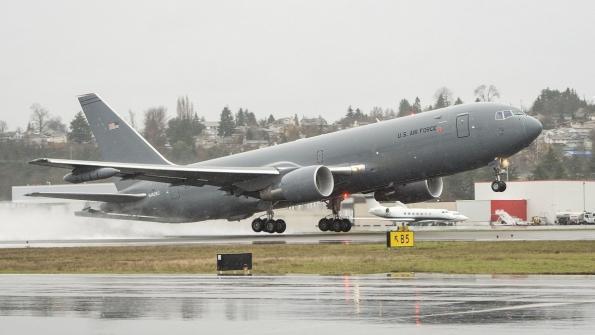
The head of the U.S. Air Force’s mobility fleet needs more data from Boeing on the KC-46 Remote Vision System (RVS) upgrade plan to determine if an interim fix is worth taking the maintenance downtime.
Boeing is upgrading the RVS to version 1.5, which is now renamed the enhanced RVS that the company promises will deliver sharper imaging, Air Mobility Command chief Gen. Jacqueline Van Ovost told reporters Sept. 14.
“But the proof is in the pudding when it comes to whether or not it actually would provide additional operational capability or additional safety,” she said.
Van Ovost and the head of the Pentagon’s operational test and evaluation office met with Boeing on Sept. 4 for KC-46 briefings. Toward the end of September, Van Ovost expects a briefing on why the Pentagon should implement enhanced RVS at no cost to the Air Force.
Air Force Research Laboratory personnel will participate in the discussion on whether the service should pursue enhanced RVS or wait until 2.0 comes online, she said.
Boeing began flight testing the enhanced RVS in June, which includes numerous software changes and a few hardware updates.
If the government opts not to deploy the upgrade, the fixes identified for RVS 1.5 will flow into the 2.0 version that is slated for fielding in the second half of 2023.
“If the Air Force decides to deploy initial RVS enhancements we could provide aircraft with those during the second half of 2021 (calendar year),” Mike Hafer, KC-46 global sales and marketing at Boeing, said in a Sept. 15 statement. “The full suite of state-of-the-art enhancements, commonly known as RVS 2.0, should be installed in tankers we deliver starting in late 2023 or early in 2024.”
